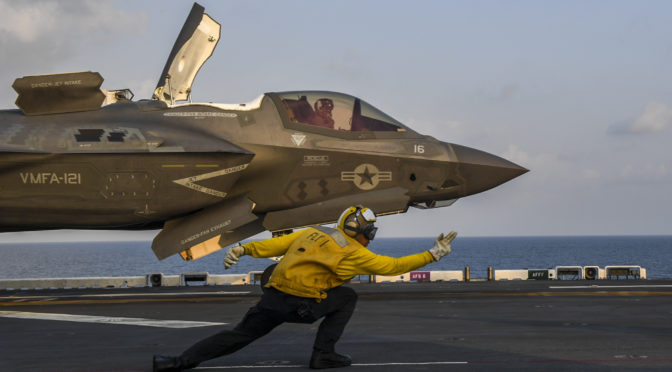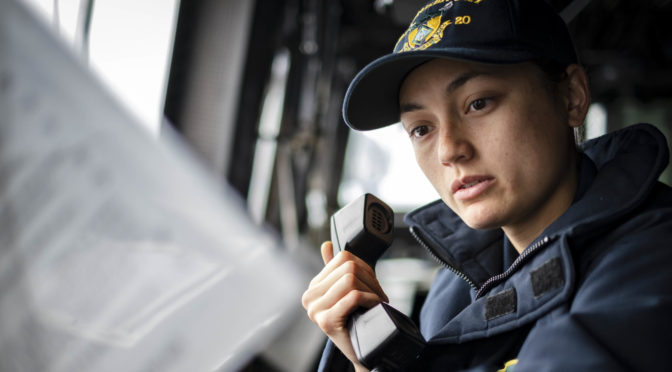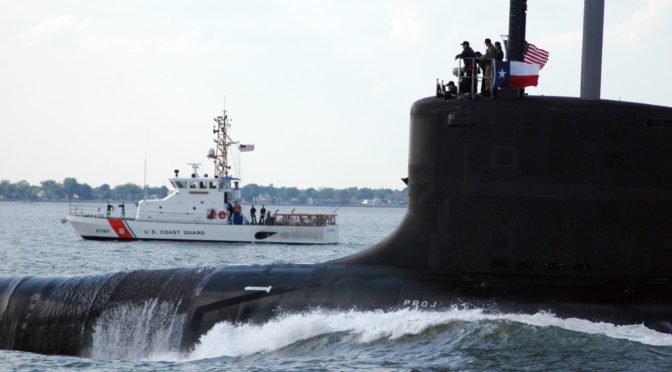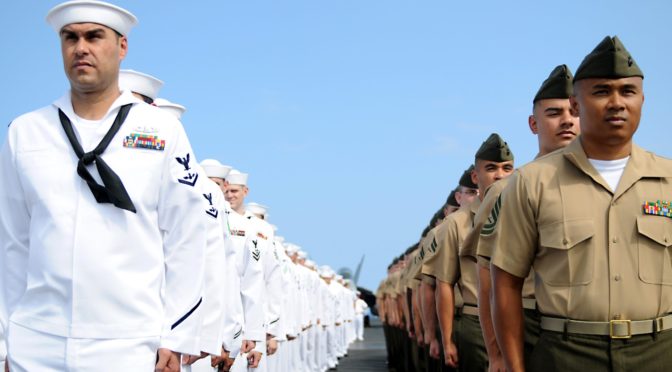CNO’s Design Week
By Christine MacNulty
Continuous learning environments, opportunities for multi-disciplinary research in warfighting concepts and technology, and expanded Live Virtual Constructive (LVC) training, as envisioned in the CNO’s FRAGO, provide important opportunities to master new skills. But do they do enough to prepare the force for the complexity and chaos likely to characterize the future maritime environment? Do they rely too much on mastering technology—which are likely common to all—and not enough on strengthening the core human abilities of the warfighters who will employ them? Will they do enough to enable warfighters to see through complexity and ambiguity?
Research in the fields of psychology, psychiatry, and neuroscience indicates that human beings are tapping only a small fraction of their potential. Numerous studies over the last 35 years suggest that individuals can be trained to access more of their brains’ capabilities and that such development can lead to enhanced performance of complex tasks—both physical and non-physical—under pressure. The field of neuroscience in particular has expanded our understanding of brainwave activity and how it shapes thoughts, emotions and behaviors, all which can affect warfighting capability.
Dr. Srini Pillay,1 one of the leading researchers in the field, has discovered that when we are engaged in a focused task our level of brain activity is relatively low, but when we activate our brains differently and raise their “cognitive rhythms” by day-dreaming, doodling, mind-wandering and even self-talk, we become more creative and open to associations and possibilities – the kinds of things that mindfulness provides. This understanding is leading to methods to enable individuals to control the levels of brain activity at will—ranging from the deepest meditation to those levels that relate to processing information from different parts of the brain simultaneously.
Intuition and insight are regarded as core components of creativity. Gary Klein,2 a leading cognitive psychology researcher who has worked with several senior Marines, including Lt. Gen. Paul Van Riper, investigated examples of intuition and insights, including how they happened, how they were accepted, and how they were used. He identified ways in which organizations can encourage and facilitate insight. He distinguished between “fixed” and “growth” mindsets, where creativity is prevalent in the growth areas. Graham Wallas, a co-founder of the London School of Economics, developed a four-stage approach for understanding how insight occurs—preparation, incubation, illumination, and verification. These insights hold tremendous potential for developing warfighters.
Warfighter investments for both officers and enlisted must do more to directly address individual capacity for reading the situation, harnessing complexity as a competitive advantage, and creatively improvising to generate advantages throughout the force. The design for the future Navy should include focused warfighter development that focuses on expanding core human capacities.
Mind-Body Training is already taking place in the Military
This idea is not new, though the most common applications have targeted ground forces. Richard Strozzi-Heckler3 reports teaching aikido and meditation techniques to Army Green Berets in the mid-1980s, and later developing a martial arts program to provide similar effects for the Marines. Navy SEALs train themselves to expand their sensory perceptions and emotional resilience. Many of them learn martial arts, mindfulness, and meditation. Would it surprise us to learn that some of our Asian adversaries are doing this, too?
A paper published in the journal Progress in Brain Research reports that Army infantry troops who went through a month-long training regimen that included daily practice in mindful breathing and focus techniques were better able to discern key information under chaotic circumstances and experienced increases in working memory function. The soldiers also reported making fewer cognitive errors than service members who did not use mindfulness. The recent study found that service members who train for four weeks experience significant improvement, but those who train for only two weeks do not.
Major General Walter Piatt, former commander of coalition forces in Iraq, reportedly attributes his best decisions to mindfulness4—the practice of using breathing techniques, similar to those in meditation, to gain focus and reduce distraction. His approach is based on work of Amishi Jha, an associate professor of psychology at the University of Miami. The Navy’s own Warrior Toughness Program, originating at Recruit Training Command, is a deliberate approach to making and operationalizing the connection of mind, body, and spirit.
SEALs and other SOF have demonstrated cognitive capabilities for situational awareness beyond those produced by mindfulness for many years. Much of it seems inherent, although advanced training in martial arts – especially Aikido and Qi Gong – are recommended, and brain training and entrainment, using breathing, humming, music and other sounds with specific beats can have measurable effects on different parts of the brain by stimulating different brainwave activity.
Mindfulness is clearly becoming broadly accepted as a useful form of cognitive training, but it is only the beginning.
Capabilities of the Future Navy Warfighter
If we truly want to maintain maritime superiority then innovating in the human cognitive domain is an area we should be examining in depth, just as more cognitively powerful technologies like automation and decision aids advance. Indeed, it may be that our focus on technology and its use in decision-making could lead us to ignore our own natural abilities and intuitions, and even lose them.
A 2020 project on SOF operators that we undertook for USSOCOM a decade ago – one of several SOF innovation projects sponsored by the combatant commander himself – may indicate some initial areas of focus. Rather than considering types of future conflicts, weapon systems, technologies, or terrain, we focused on physical, emotional, and mental capabilities that would equip SOF operators with the ability to operate effectively under any conditions. Participating SOF operators recognized that warfighting is as much a mental and emotional activity as a physical one, and that incorporating mental and emotional training increased all warfighting capabilities.
Some of the key cognitive capabilities identified as desirable include:
Intuition/Insight: Being aware of all one’s senses, trusting one’s heart and gut, and using mental imagery to one’s advantage. Many SOF have had their lives saved by intuition about ambushes, buried IEDs, and incoming mortars and bombs. Interestingly, many scientists, inventors, and engineers attribute their successes to these same intuitive capabilities.
Ability to Operate at the Edge of Chaos: The term “edge of chaos” is used to denote a transition space between order and disorder that is believed to exist within a wide variety of systems. In our description of related competencies, it is a combination of the ability to make decisions under severe stress, operate in ambiguity, have emotional stability, and exhibit courage and fortitude.
Concentration: Ability to know when to focus, and then allocate attention using all senses.
Awareness: the ability to directly know and perceive, to feel or be cognizant of physical, mental, and emotional signals. This can include physical awareness – sight, sound, feelings. Acute, trained hearing can pick up sounds of engines and engine anomalies at very low decibels or long distances. And some troops with experiences of “knowing” where IEDs have been planted have indicated personal biomarkers such as a feeling of coldness across their shoulders.
Some of these were also inspired by the work of Richard Strozzi-Heckler (In Search of the Warrior Spirit – based on his work with Marines and SOF) and Commander Mark Divine,5 USN, (ret.) – a former SEAL (Unbeatable Mind ) – who has developed a leadership training program of the same name.
While originally conceived in the context of small unit engagements by special operations and ground forces, this list addresses advanced human capabilities that would benefit people operating in the multi-domain maritime environment. Education and training in these capabilities would be very different from that in the traditional RRL curricula, yet could be important to the force’s ability to deliver on many of the objectives described in the CNO’s FRAGO. Building on the Warrior Toughness Program and expanding its reach across the force is a place to start and reinforce the skills being developed among new accessions. Scaling up the methods that have been developed so far for delivering training and measuring effects will require continued research and innovation.
Combining the Best of People and Technology
As the world becomes more complex and chaotic, the faster Sailors can take in and make sense of information of all kinds that is bombarding them, the better. Fast reaction times and greater mental resilience equate to increased ability to manage risk and strike at the enemy.
We believe that innovation in the human domain is as important as it is in the technological domain – and figuring out the right things to do morally, mentally, and physically is as important as doing them right. All ideas come from or through the human mind. Why not explore what it takes to operate at the edge of chaos—and win?
Christine MacNulty is the CEO of Applied Futures, Inc. and is a strategist, futurist and writer on the human dimensions of innovation, strategy and warfighting. She is the co-author of Strategy with Passion: A Leader’s Guide to Exploiting the Future, and many papers and monographs. She is grateful to VADM Patricia Tracey (ret). for her comments and suggestions. Any remaining errors were produced without help.
References
1. Dr. Srini Pillay, Tinker, Dabble, Doodle, Try, Ballantine Books, NY, 2017.
2. Dr. Gary Klein, The Power of Intuition, Doubleday, NY 2003, and Dr. Gary Klein, Seeing What Others Don’t, Public Affairs, 2013.
3. Richard Strozzi-Heckler, In Search of the Warrior Spirit, 1990 – latest edition, Blue Snake Books, 2007.
4. https://www.nytimes.com/2019/04/05/health/military-mindfulness-training.html
5. Mark Divine, The Way of the SEAL, Readers Digest Book, 2015, and Mark Divine, Unbeatable Mind: Forge Resiliency and Mental Toughness to Succeed at an Elite Level.
Featured Image: South China Sea (August 22, 2019) – Junior Officer of the Deck Ensign Jasmine Walker, from Lexington, South Carolina, establishes bridge-to-bridge communications with another marine vessel while standing watch on the bridge aboard the amphibious transport dock ship USS Green Bay (LPD 20). (U.S. Navy photo by Mass Communication Specialist 2nd Class Markus Castaneda)




